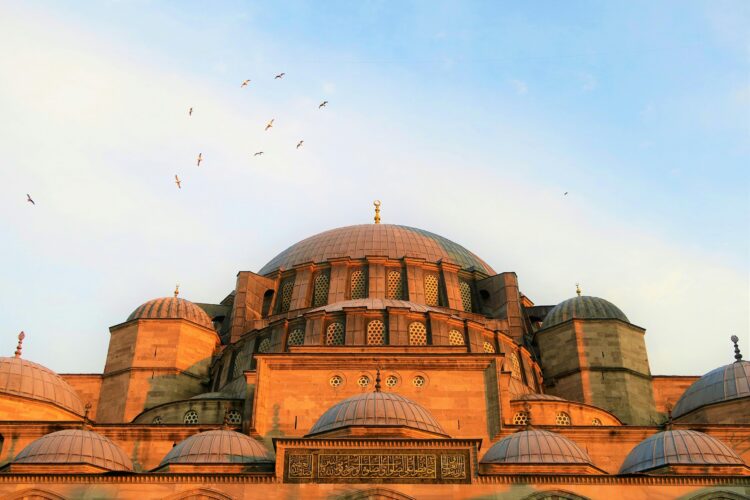Istanbul is a city that doesn’t just exist on the map, it lives, breathes, and sparkles across two continents. Here, the past and present dance together in every street, every skyline, and every slice of Turkish delight. One moment you’re wandering through ancient palaces built beneath the earth, and the next you’re looking out from a futuristic tower that pierces the clouds. Istanbul is layered with empires, stories and secrets; it’s a destination where every corner reveals something new. Whether you’re a historic lover, culture explorer, or someone chasing the world’s most unforgettable views, the city draws you in with a charm only Istanbul can offer.
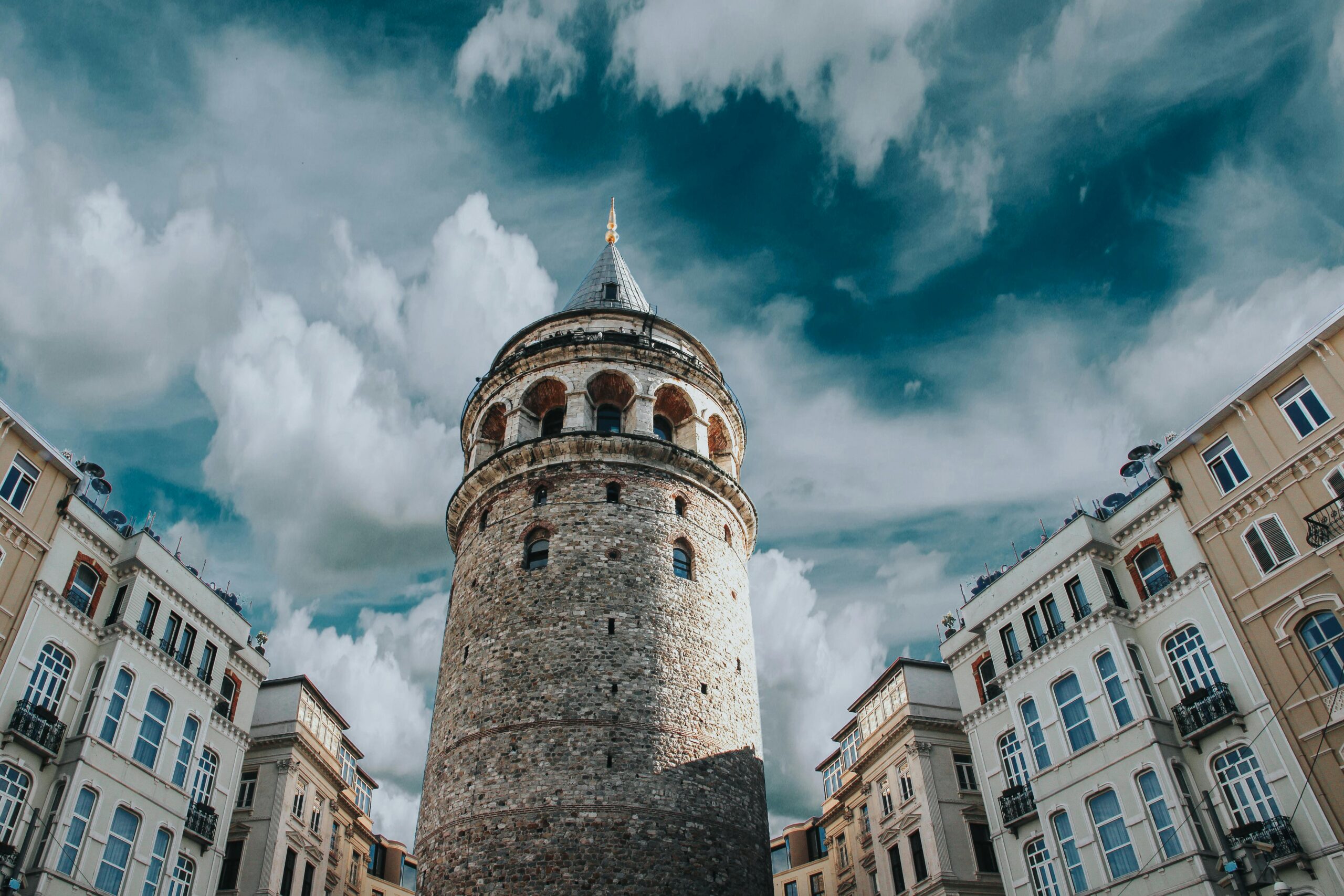
Here’s a curated journey through some of the most iconic places, each one carrying centuries of history, fascinating myths, and reasons why they deserve a spot on your travel itinerary.
1) Galata Tower: Istanbul’s Timeless Marvel
Galata Tower stands proudly above the Galata district, a 63-metre cylindrical stone structure that has witnessed centuries of triumphs, disasters and rebirth. It’s origins stretch back to the 5th century, when the Byzantines built a wooden watchtower called Magolas Pyrgos to oversee Constantinople and the Golden Horn. Fires, earthquakes, and the Fourth Crusaders invasion eventually destroyed it, but in 1348, the Genoese rebuilt it in stone as Christea Turris, the Tower of Christ. For centuries, it served different roles: a prison, an observatory, and a fire watchtower during the Ottoman era.
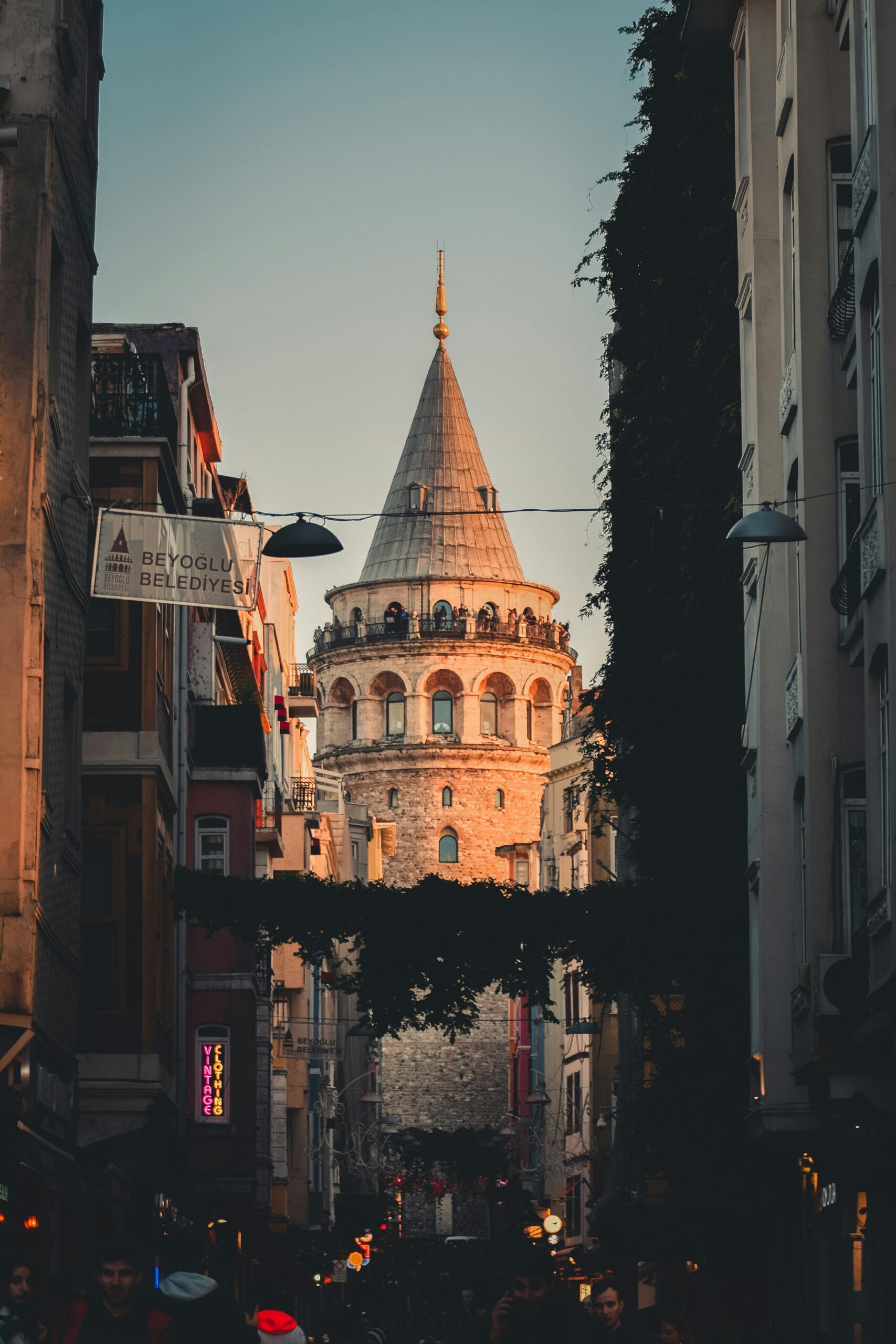
Today, after major restorations in the 1960s, Galata Tower offers one of the most stunning 360-degree city views imaginable. The observation deck allows visitors to see the Bosphorus, Hagia Sophia, the historic peninsular, and the endless layers of Istanbul’s urban tapestry. Beyond the views, it’s exhibitions trace the tower’s transformation across empires, while it’s Genoese architecture, thick stone walls, and conical roof make the tower itself a piece of art. Inside, a restaurant and a cafe invite travellers to sip Turkish coffee with a skyscraper-worthy view, and cultural events often bring the tower to life after sunset.

What makes Galata Tower extra fun is it’s legend, the tale of Hezarfen Ahmed Celebi, who supposedly strapped on wooden wins in the 16–s and flew from the tower across the Bosphorus. Whether myth or reality, it adds flair a visit that’s already magical. Galata Tower is not just something to see, it’s a place to feel the heartbeat of Istanbul from above.
2) Basilica Cistern Museum: Istanbul’s Underground Palace
If Istanbul’s streets feel vibrant and alive, it’s underworld feels like an ancient dream. The Basilica Cistern, also known as Yerebatan Sarnıcı, sits beneath Sultanahmet like a hidden palace carved in silence. Built in the 6th century under Emperor Justinian I, this massive underground reservoir once stored up to 80,000 tons of water to serve the Great Palace and surrounding buildings. With a surface area of about 10,000 square meters, the cistern is lined with 336 marble columns arranged in perfect rows, some with Corinthian capital, some plain, many repurposed from earlier Roman structures.
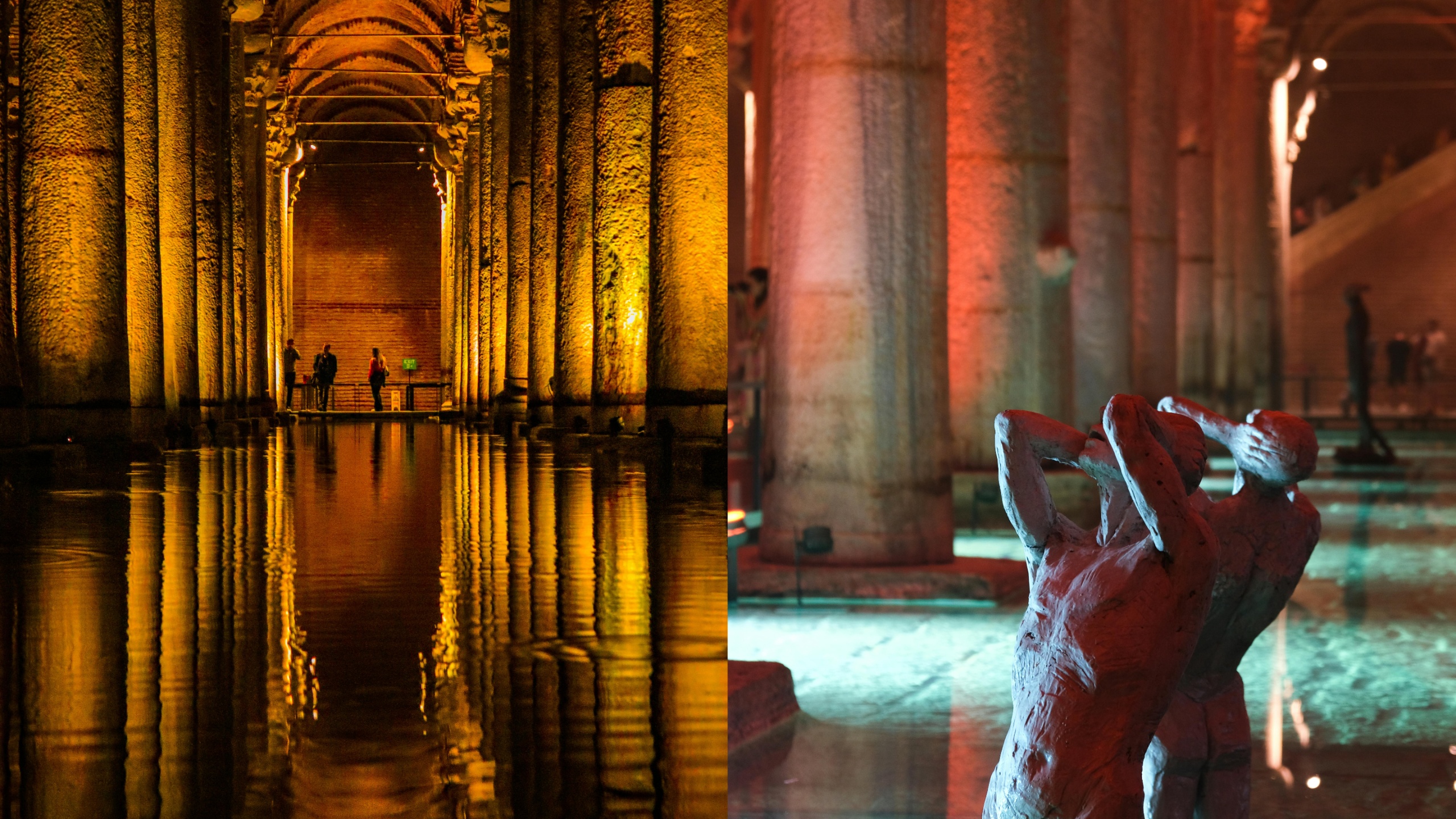
For centuries, the cistern’s existence faded from memory until French naturalist Petrus Gyllius rediscovered it in the 1500s after noticing locals drawing water from holes in the ground. His descriptions of people rowing small boats inside the dimly lit chamber made the basilica cistern famous across Europe. Over the years, the cistern underwent multiple restorations, including it’s most extensive restoration in 2022, which transformed into a modern museum space.
The most iconic features are the two Medusa heads supporting column at the cistern’s western end, one upside down, the other sideways. Historians belive these ancient sculptures were reused from Roman-era buildings, but legends say the heads were placed that way to neutralise Medusa’s gaze. Walking through this dim, echoing space feels like entering a myth.

What makes the Basilica Cistern a must-visit today is how history and art blend together. Contemporary installations and cultural events often take place inside, creating a surreal contrast between ancient stone and modern creativity. Whether you’re a history buff, photographer, or someone who loves atmospheric places, this underground world is one of Istanbul’s most unforgettable experiences.
3) Blue Mosque: A Masterpiece of Ottoman Grandeur
Facing the Hagia Sophia across Sultanahmet Square stands the breathtaking Blue Mosque, officially known as the Sultan Ahmed Mosque. Built between 1609 and 1616 during the rule of Sultan Ahmed I, this masterpiece was designed to rival and in some ways surpass, the grandeur of Hagia Sophia. The mosque gets it’s popular name from the more than 20,000 hand-painted iznik tiles that adorn it’s interior , featuring motifs of tulips, carnations, and lilies glowing under natural light from 260 windows.

It’s architectural brilliance lies in it’s structure: a central dome supported by massive ‘elephant foot’ pillars, flanked by four semi-domes that create an impressive, almost symmetrical interior. But perhaps the most striking feature is it’s six minarets. But perhaps the most striking feature is it’s six minarets. At the time, only the Prophet’s Mosque in Mecca had six minarets, and the bold designs decision sparked controversy. Legend says Sultan Ahmed requested altın (gold) minarets but architect Mehmet Aga misheard it as altı (six) minarets. Whether the story is true or not, the mosque’s silhouette became on of Istanbul’s defining visuals.
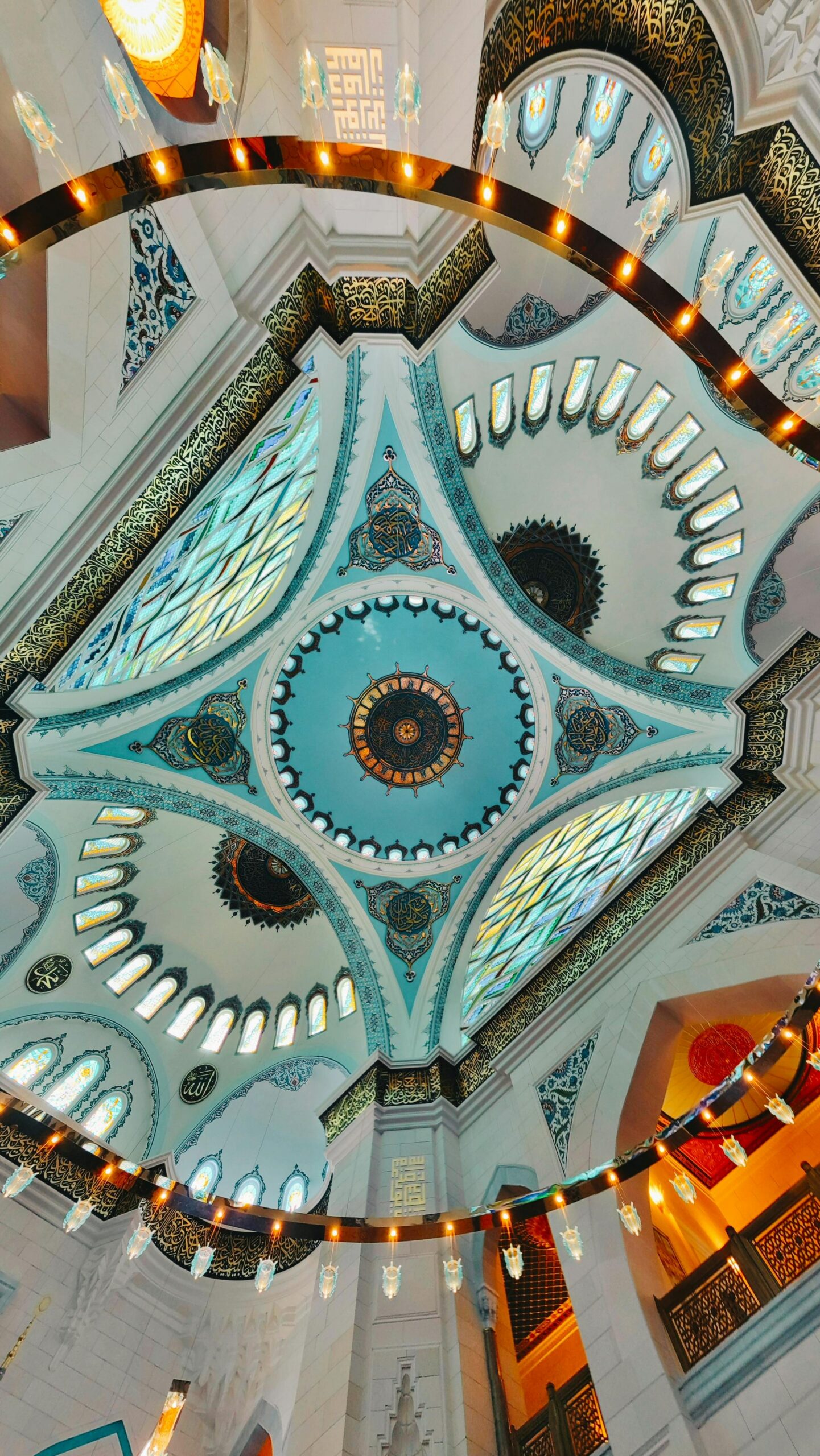
Stepping inside the Blue Mosque today offers a serene escape from the bustling streets. The blend of Ottoman calligraphy, glowing chandeliers, and soft blue hues creates a space that feels spiritual, calming, and deeply connected to Turkey’s history. It is one of the most visited sits in Istanbul and for a good reason, it is for both an architectural triumph and a living place of worship.

4) Hagia Sophia: A Monument That Defines Civilization
Hagia Sophia is one of the world’s most important architectural and historical landmarks. Originally built between 532 and 537 CE under Emperor Justinian I, it stood as the largest cathedral in the world for nearly a thousands years. The church itself replaced earlier structures destroyed by fires and riots including the massive Nika Revolt. That is enormous dome was completed in just 6 years is considered one of the greatest engineering achievement of all time.
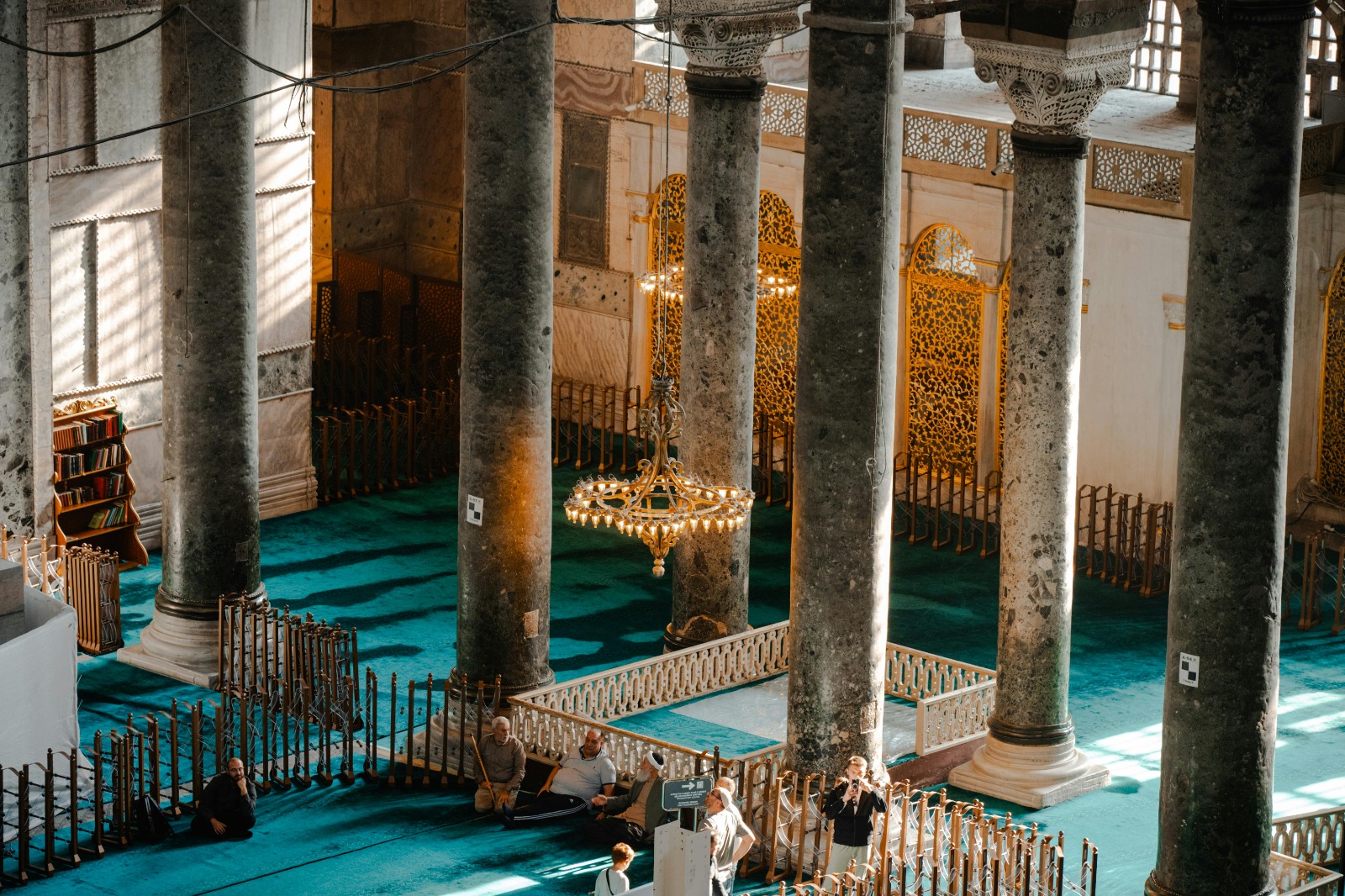
Designed by mathematicians, and architects Anthemius of Tralles and Isidorus of Miletus, Hagia Sophia combines a longitudinal basilica with a monumental central dome supported by innovative pendentives. Inside, marble column, carved cornices, and walls lined with coloured marble slabs create an atmosphere of awe. Although many Byzantine mosaics have been have been lost, surviving pieces, especially depictions of Christ and the Virgin Mary, remain powerful reminders of the building’s Christian origins.
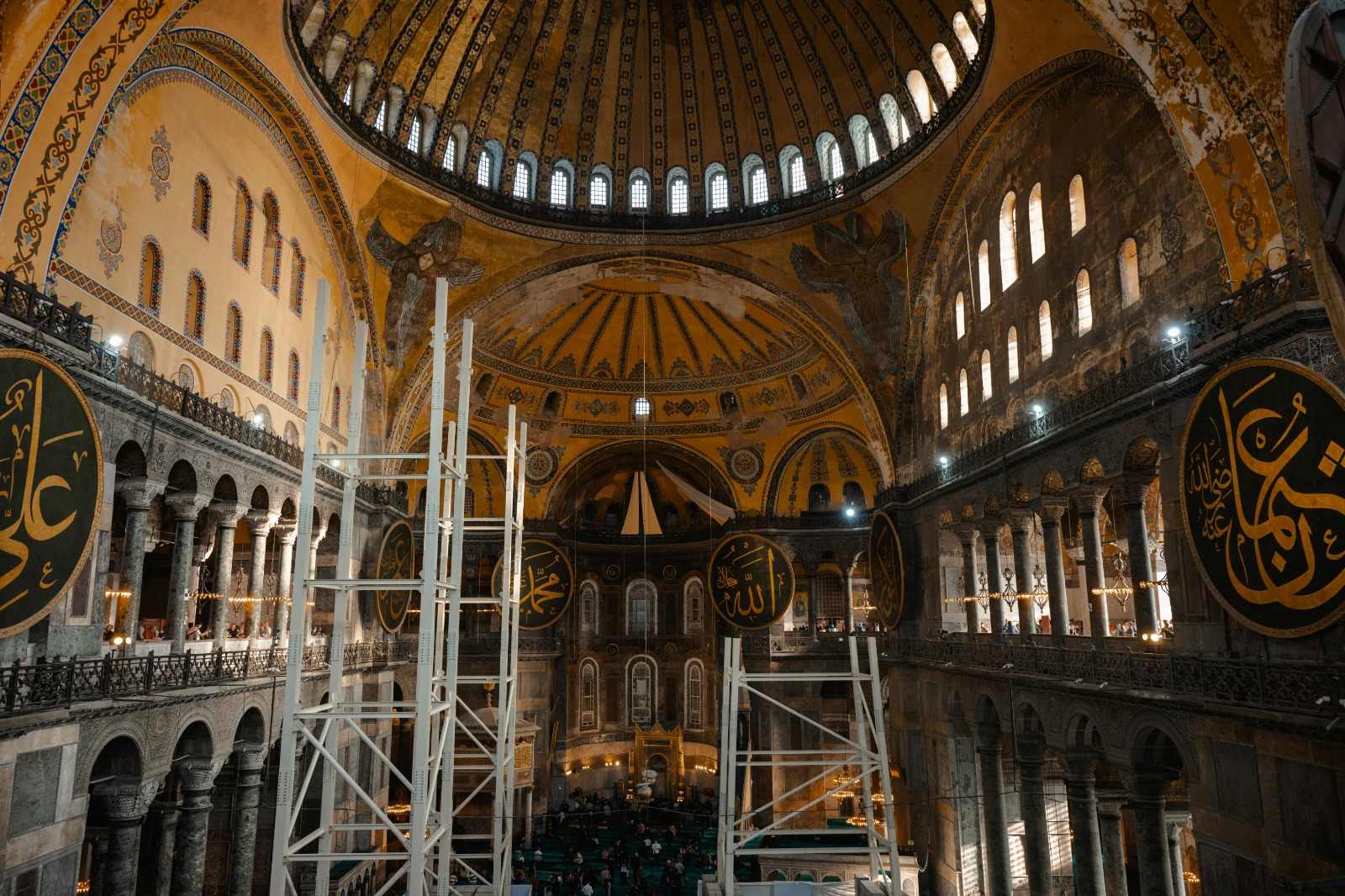
Standing inside Hagia feels like standing at the interaction of civilizations. The interplay of domes, light, Christian mosaics and Islamic calligraphy creates a uniquely transcendents experience. It is a must visit not only for it’s beauty but also for it’s ability to tell the story of Istanbul in one single structure.
5) Hagia Sophia Digital Museum: A 1700-Year Journey in One Space
Just a short walk from Hagia Sophia stands one of Istanbul’s most immersive museums: the Hagia Sophia History and Experience Museum. Located in the former Ottoman Registry Building, this museum spans 13 galleries and uses state of the art digital installations to tell the building’s story from it’s origins to the present day.
Visitors begin with the founding of Byzantium and move through time, learning about emperors, mathematicians, architects, and sultans who shaped Hagia Sophia. Nearly 300 participants are on display, including rare pieces dating back to the 4th century. The museum’s highlight is the Sinan Installation, a stunning audiovisual piece featuring 12,000 illuminated cubes and the mesmerizing Infinity Mirrors rooms, which visually reimagines the interior of Hagia Sophia through light and reflection.
The museum is a brilliant choice for travellers who want context before or after visiting the real Hagia Sophia. It transforms centuries of complex history into a multi-sensory journey that appeals to all ages.
6) Grand Camlica Mosque: Istanbul’s New Symbol of Modern Spirituality
Opened in 2019, the Grand Camlica Mosque is the largest mosque in Turkiye and a striking symbol of modern Istanbul. Inspired by Ottoman and Seljuk architectural motifs, it’s design blends the old and new seamlessly. It’s 72-meter-high main dome represents the 72 nations living in Istanbul, while it’s 34-metre dome diameter references the city’s European-side plate code, 34. Every detail has meaning, from the 6 minarets symbolizing the pillars of faith to the inscriptions representing the 16 great Turkish states.
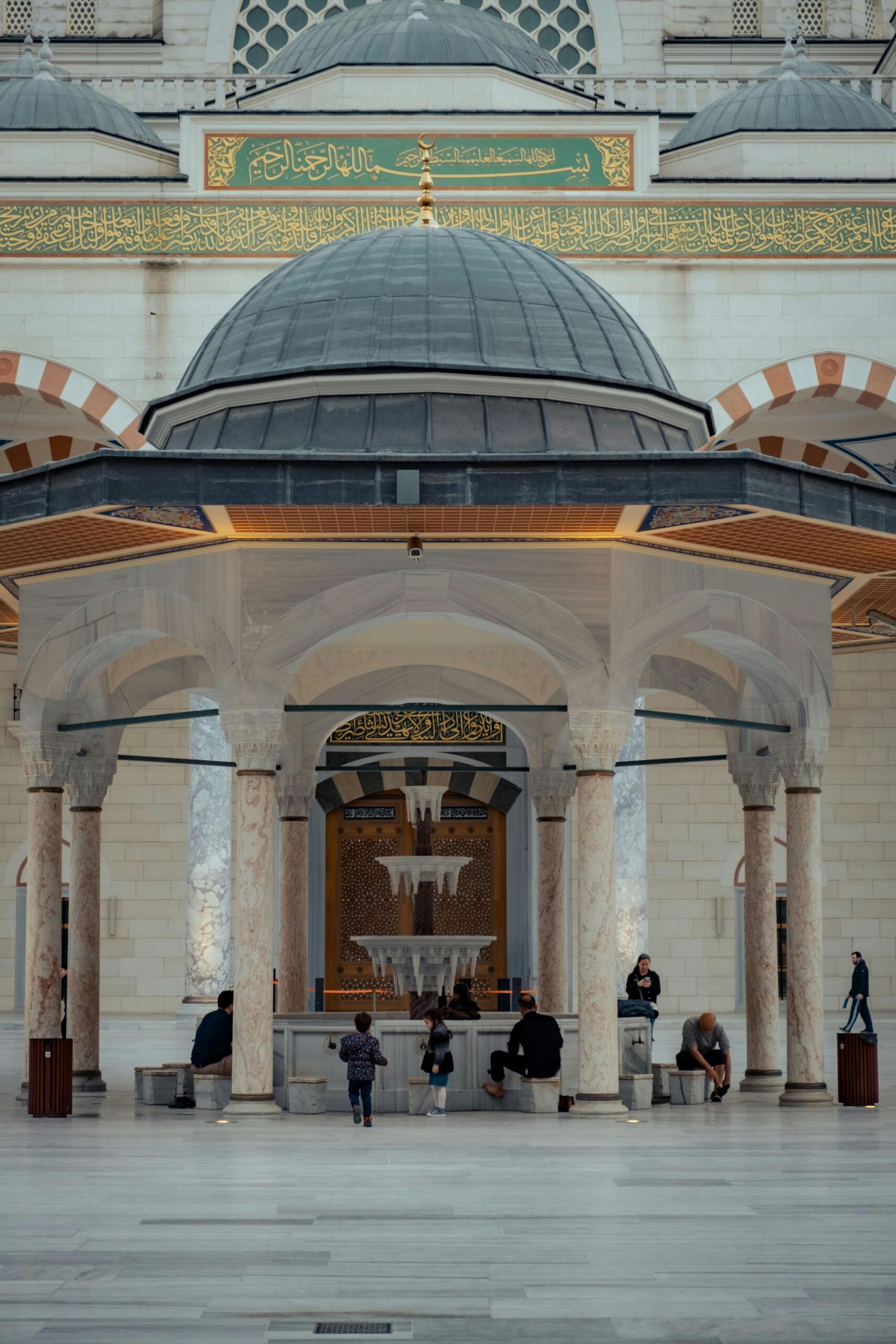
Built on a massive 15,000-square-meter complex on Camlica Hill, the mosque can accommodate 63,000 worshippers at once. Beyond the prayer hall, the complex includes a museum, art gallery, library, and landscaped courtyards. It’s hilltop location also offers an incredible panoramic view of the Bosphorus and the historic skyline.
A visit here offers more than architectural beauty, it offers a sense of Istanbul’s identity as a city where spirituality and culture flow together. It is peaceful, grand, and deeply symbolic.
7) Camlica Tower: Istanbul’s Sky-High Adventure.
Just moments from the mosque stands Camlica Tower, the tallest structure in Turkiye at 369 meters. Sleek, futuristic, and visually striking, the tower is an ode to modern Istanbul. Reaching the top is an experience in itself, a thrilling ride in a glass elevator that reveals more of the city the higher you rise.
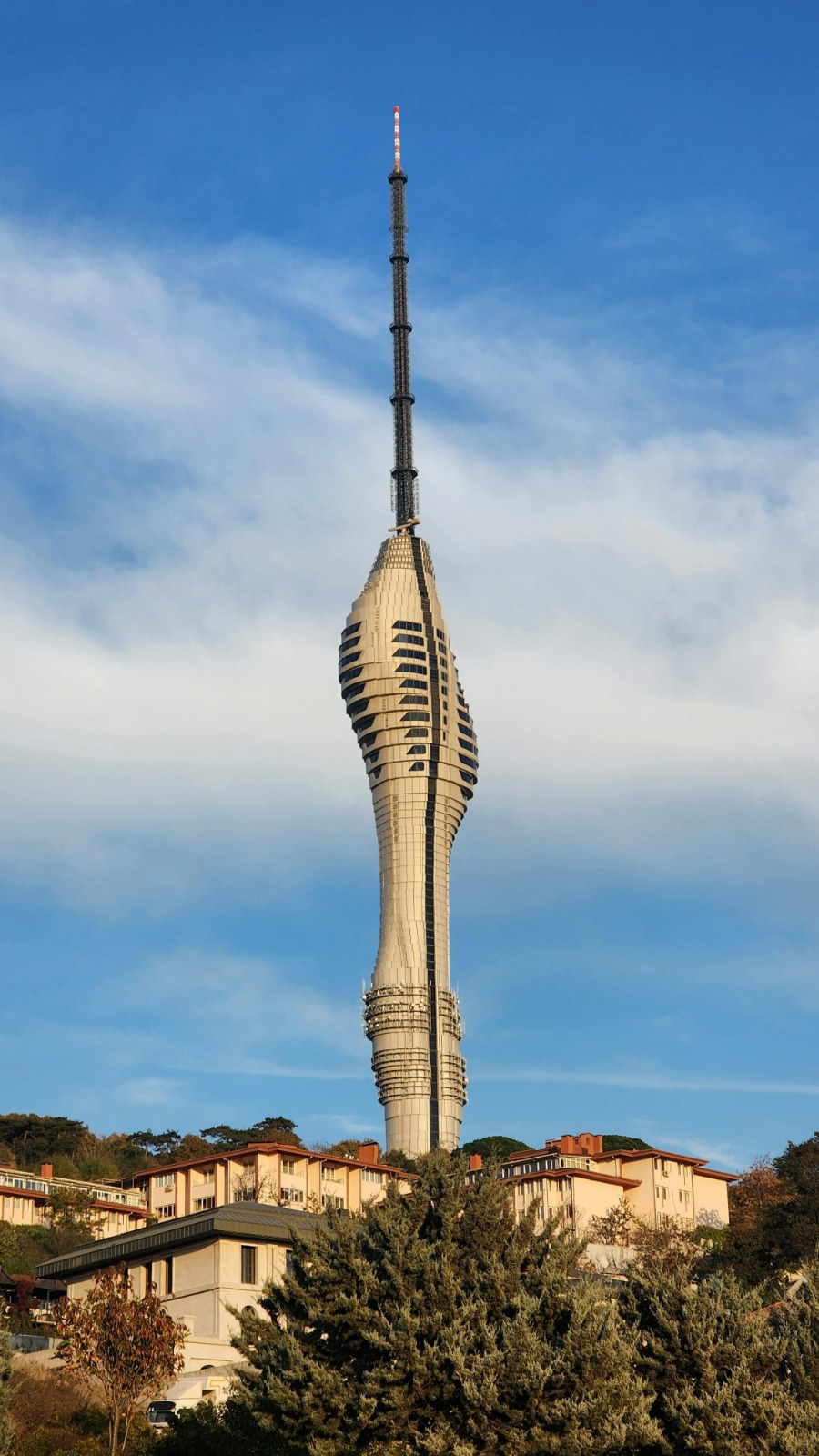
From the observation decks, visitors can see the Bosphorus Strait, the Princes Islands, the Asian and European skylines, and the historic peninsula. Whether during daylight or at night, the view is nothing short of spectacular. Inside the tower, restaurants offer fine dining with world-class views, while interactive exhibits such as Mission Moon and Seyyah 360 give visitors a playful, modern way to explore the city.
Camlica Tower is ideal for travellers who crave both excitement and beauty, it is Istanbul from the sky, in all it’s sweeping glory.
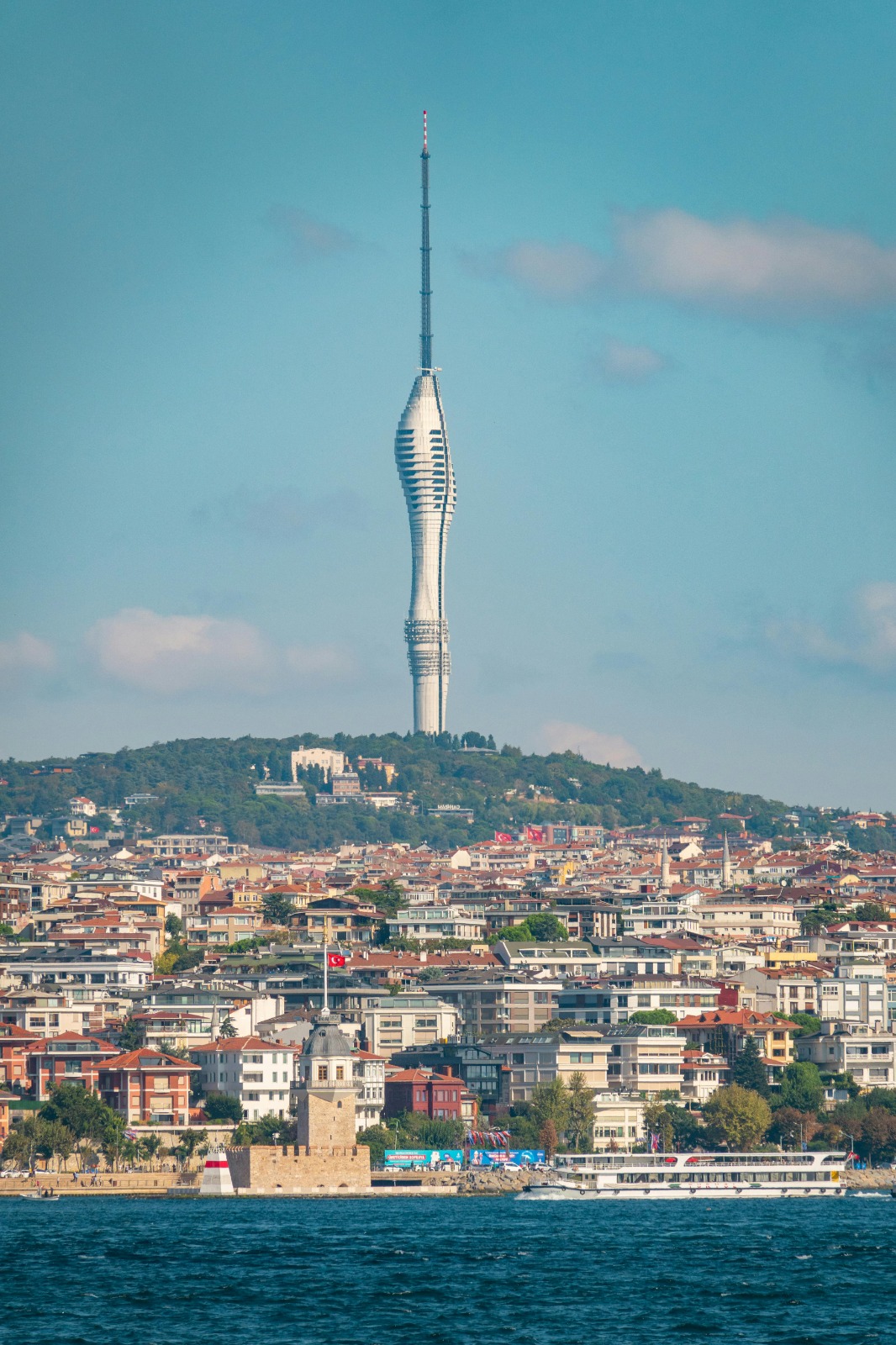
8) Grand Bazaar: The Beating Heart of Istanbul
No trip to Istanbul is Istanbul is completed without getting lost inside the Grand Bazaar. Built in the 15th century by Sultan Mehmet II to generate funds for Hagia Sophia, the bazaar grew over time into one of the world’s largest covered markets. Today it spans 56 streets, houses around 4,000 shops and employs more than 30,000 people.
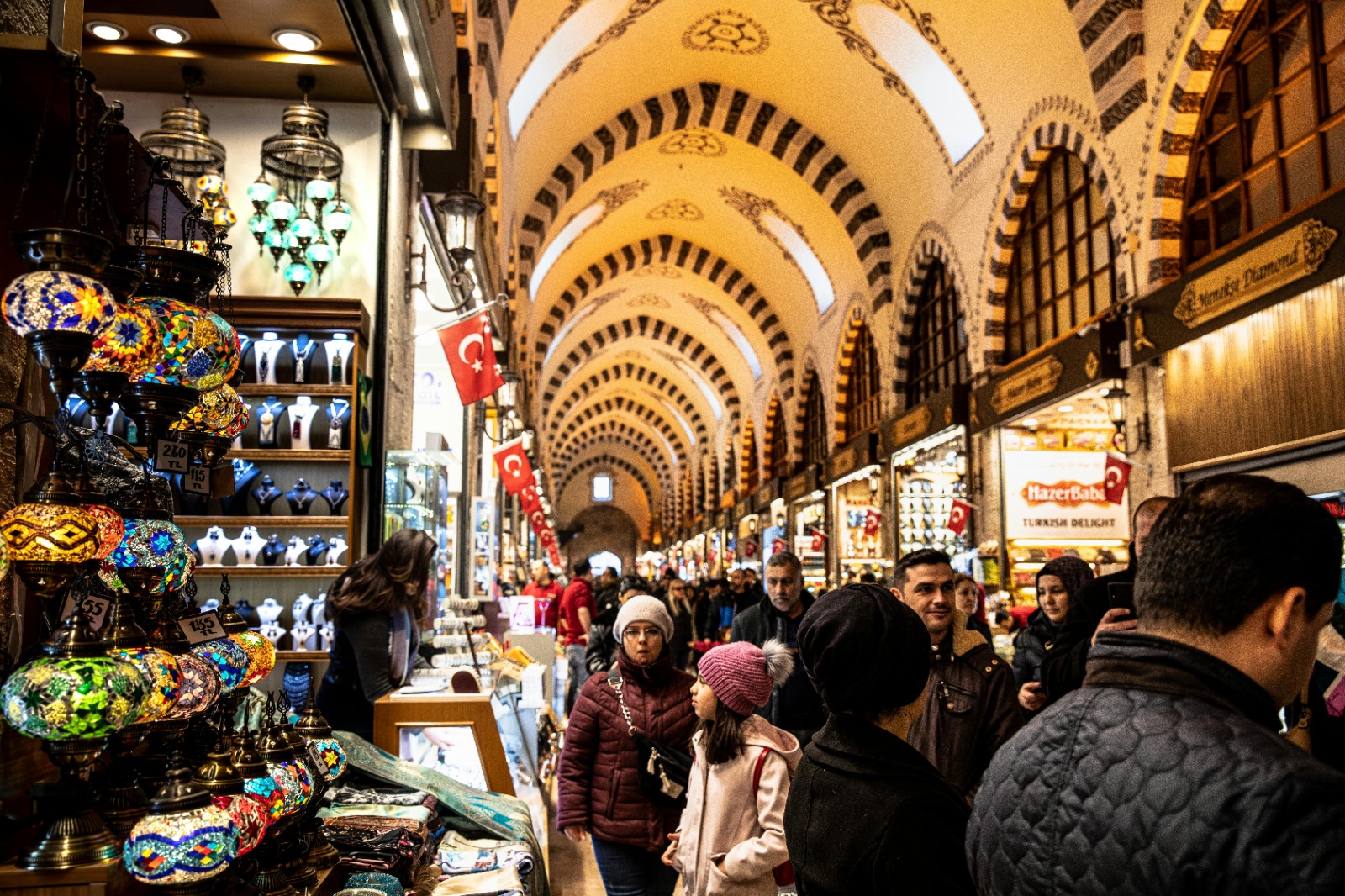
The bazaar’s architecture blends brick vaults, stone arches, and domed ceilings, with each street traditionally dedicated to a specific craft, from leather and textiles to jewellery and carpets. Two of it’s oldest structures, the Cevahir Bedesten and Sandal Bedesten, date back to the earliest days of the market and once sold precious fabrics, gold, and gems.

Walking through the Grand Bazaar is a sensory adventure. The calls of shopkeepers, the sparkle of lanterns, the smell of spices and the rows of handmade ceramics create a world that feels both historic and alive. Bargaining is part of the experience, and even if you don’t buy anything, the atmosphere alone makes it unforgettable.
A City That Lives in Every Moment
Istanbul is a place that lives between worlds, ancient, and modern, Asian and European, spiritual and secular. It’s landmark tells stories of empires, artisans, sultans, architects and everyday people who shaped the city across thousands of years. Whether you’re gazing at the skyline from Galata Tower, wandering through a sunken palace beneath the streets, or breathing in the colours of the Grand Bazaar, Istanbul leaves an impression that lingers long after you’ve left.
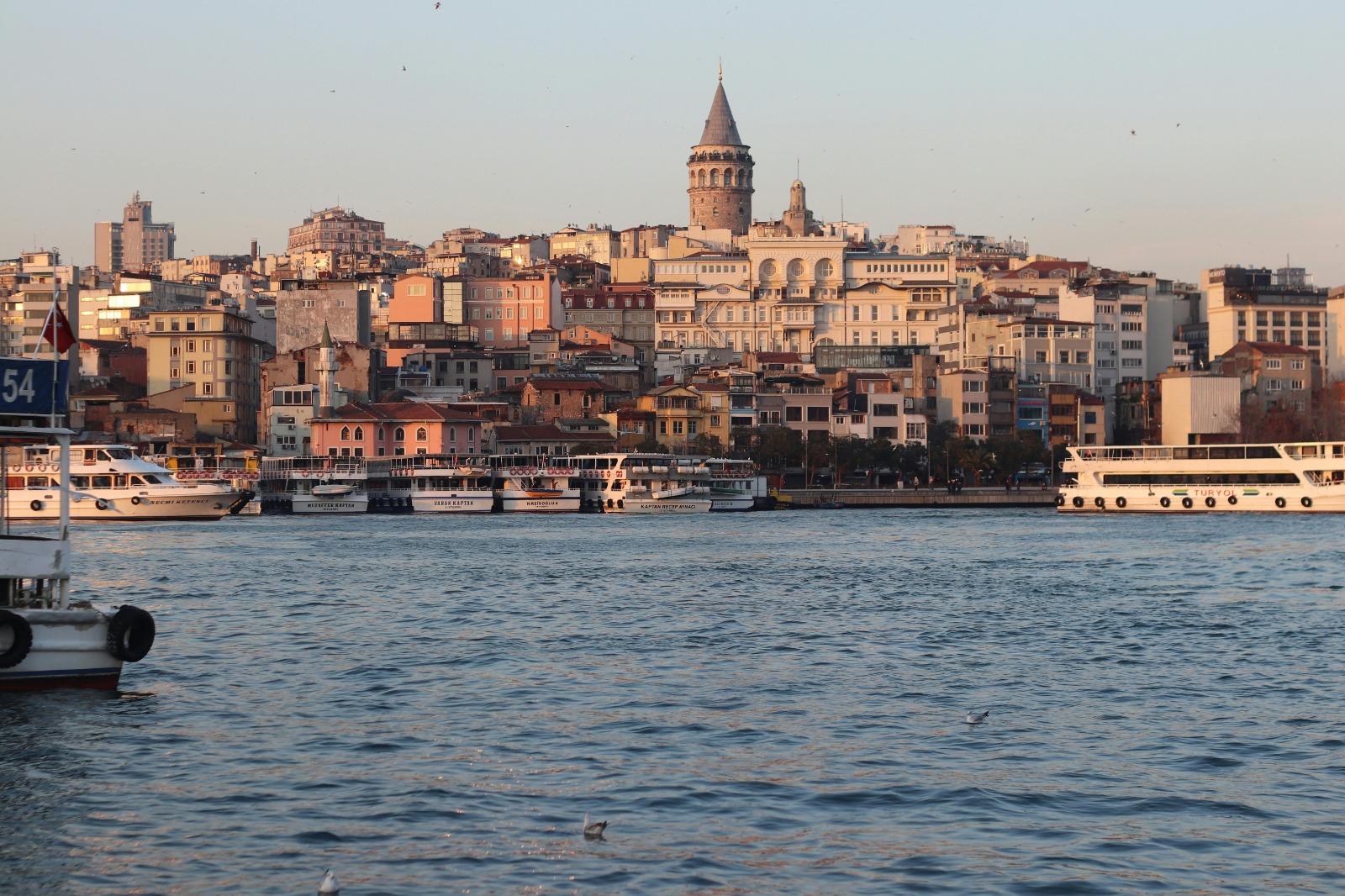
And now, exploring this incredible city is easier than ever, AirAsia is now officially flying to Istanbul, opening the doors to your next unforgettable adventure. Plan and book your Istanbul getaway now on the AirAsia MOVE app or the AirAsia website.
Follow us on Instagram, Facebook or Telegram for more updates and breaking news.


